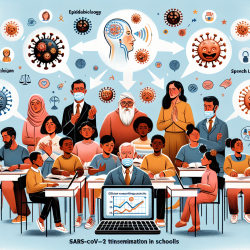In the evolving landscape of education, effective communication between teachers and parents is crucial for fostering partnerships that enhance student success. This necessity has become even more pronounced in the wake of global challenges such as the COVID-19 pandemic. As educational demands grow and stressors increase, building strong connections between school and home through strategic communication is essential.
The Importance of Communication
Communication serves as the foundation for parental involvement in education. It is a dynamic process that not only involves sharing information but also creating an inclusive environment where parents feel valued and respected. Effective communication strategies can bridge gaps between home and school, enhancing student learning experiences.
One-Way Communication Strategies
- Email: A convenient method for sharing updates about academic performance and upcoming events. However, it’s important to maintain a professional tone and clarity to avoid misunderstandings.
- Newsletters: Digital newsletters can keep parents informed about classroom activities, school policies, and educational resources.
- Websites: School and class websites serve as accessible platforms for parents to find information about school programs and their child's progress.
Two-Way Communication Strategies
- Parent-Teacher Conferences: These meetings provide opportunities for in-depth discussions about student progress and areas of concern. Virtual meetings have become increasingly popular, offering flexibility for parents.
- Phone Calls: Direct phone conversations can address urgent issues or provide personalized feedback on student performance.
- Text Messaging: A quick and effective way to communicate reminders or updates, especially useful when language barriers exist as messages can be translated easily.
Tackling Barriers to Communication
A range of barriers can hinder effective communication between teachers and parents. These include racial stereotypes, language differences, lack of teacher training, technological challenges, and time constraints. Addressing these barriers requires a strategic approach that includes cultural sensitivity training for teachers, the use of translation services, and flexible scheduling to accommodate working parents.
The Role of Technology
The rapid advancement of technology has transformed the ways schools communicate with families. Tools such as mobile apps facilitate instant messaging between teachers and parents, although concerns regarding privacy and data security must be addressed. Schools are encouraged to establish clear policies around digital communication to ensure consistency and protect all parties involved.
The Path Forward
The future of school-home communication lies in harnessing technology while maintaining personal connections. Teachers should be equipped with the skills necessary to navigate both digital platforms and face-to-face interactions effectively. By fostering open lines of communication with parents, educators can create a supportive network that contributes to positive student outcomes.
For more information on strategies for enhancing school-home communication, please follow this link.










